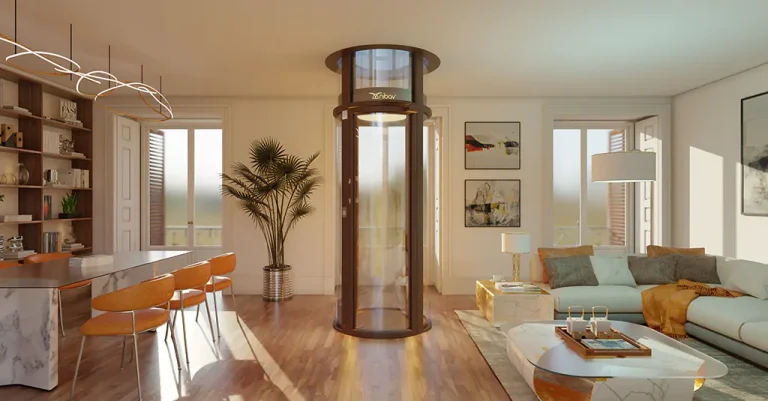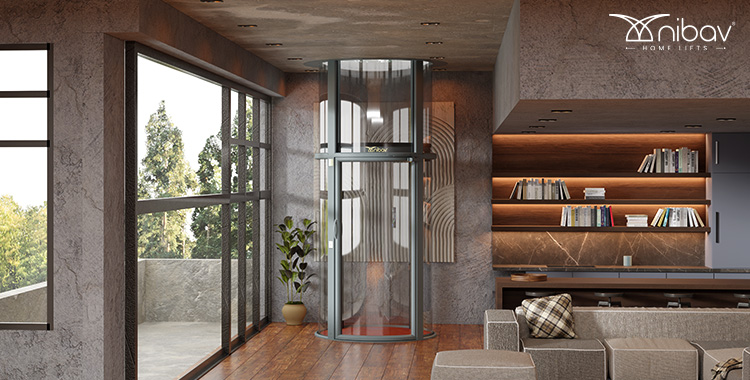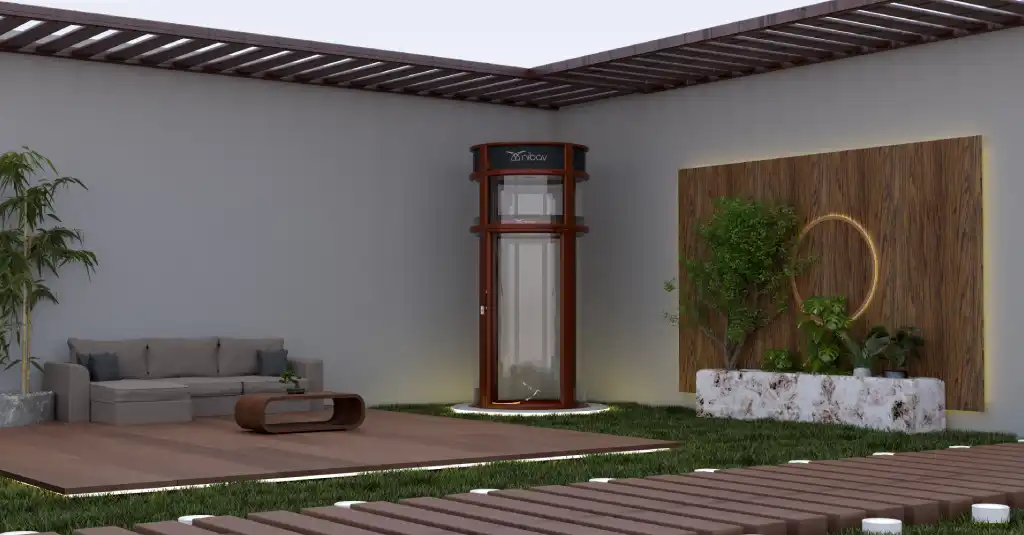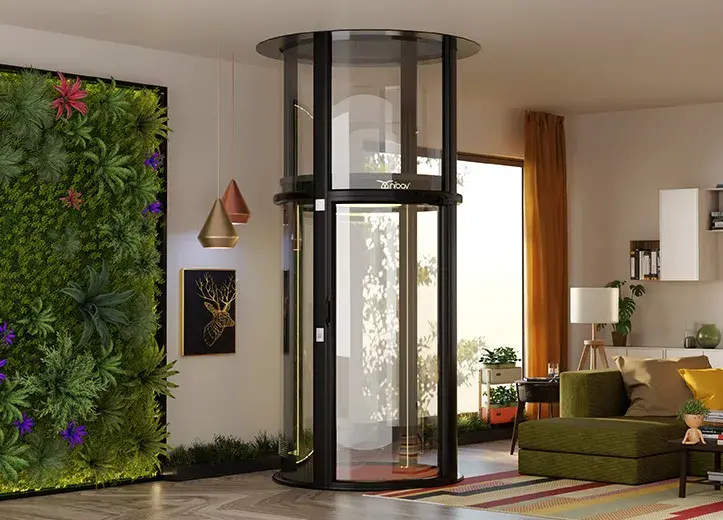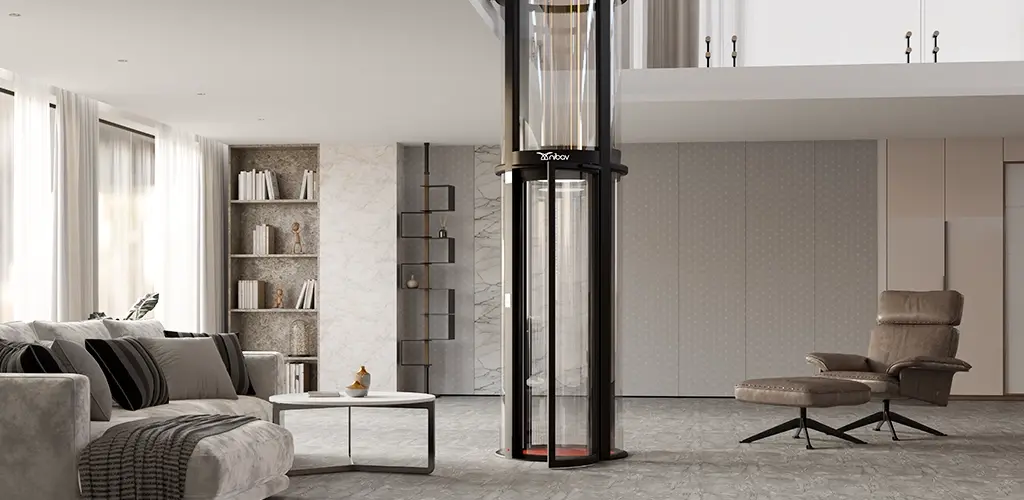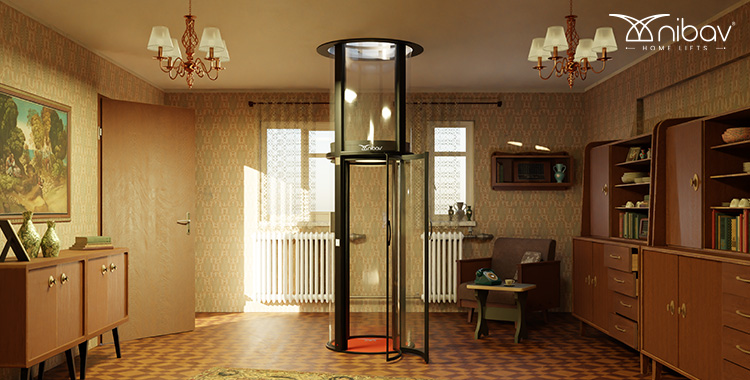
Table of Contents
Accessibility has become a top priority for modern homes—whether for elderly family members, individuals with mobility challenges, or homeowners planning future comfort. As multi-level homes become more common, the need for safe and convenient vertical movement has increased. Two of the most popular solutions are home elevators and stairlifts. While both serve the same purpose—helping people move between floors—they differ significantly in design, cost, comfort, and long-term value.
If you’re renovating your home or building a new one, it’s essential to understand the advantages and limitations of each option. This guide offers a detailed comparison to help you decide which is better for accessibility improvements: a home elevator or a stairlift.
Understanding the Basics
What is a Home Elevator?
A home elevator is a compact lift system installed inside a house to provide smooth, vertical transportation between floors. Modern home elevators come in various types—vacuum elevators, hydraulic lifts, traction lifts, and machine-room-less elevators. These systems are designed for residential use, offering comfort, style, and high safety standards.
What is a Stairlift?
A stairlift is a motorised chair that moves along a rail fitted to your staircase. Users sit on the chair, buckle in, and ride up or down the stairs at a controlled speed. Stairlifts are typically used in homes where structural modifications are limited or budget constraints exist.
Installation Requirements
Home Elevator Installation
Installing a home elevator requires:
- A dedicated space or elevator shaft (depending on the model)
- Power supply and structural considerations
- Minimal or moderate civil work
- Professional installation and safety inspection
New-age home elevators, especially vacuum or MRL (machine-room-less) designs, require less space and fewer modifications than traditional models. They can even be retrofitted into existing homes.
Stairlift Installation
Stairlift installation is:
- Fast (often within a day)
- Simple and minimally intrusive
- Possible for both straight and curved staircases
- Less dependent on structural changes
However, stairlifts may not be compatible with extremely narrow staircases or certain staircase designs.
Cost Comparison
Home Elevator Cost
A home elevator is a larger investment but also a long-term asset. Costs depend on:
- Lift type (vacuum, hydraulic, traction)
- Number of floors
- Customisations
- Brand and safety features
Prices are generally higher than stairlifts, but home elevators add luxury, convenience, and significant property value.
Stairlift Cost
Stairlifts are comparatively affordable. Costs depend on:
- Straight or curved rail
- Weight capacity
- Chair design
- Battery backup and additional features
However, stairlifts do not add much resale value and may even be removed by future homebuyers.
Safety Features
Home Elevators: High-Level Safety
Home elevators come equipped with:
- Emergency alarm and auto-descent
- Safety sensors
- Speed control
- Battery backup
- Child-safe locks
- Fully enclosed cabins
- Smooth start/stop function
They are engineered to provide safe, hands-free operation—ideal for elderly users, children, and people with disabilities.
Stairlifts: Safety but Limited
Stairlifts offer:
- Safety belts
- Obstruction sensors
- Slow and controlled movement
- Battery backup
While safe to use, stairlifts require the user to sit, buckle up, and transfer independently between the chair and landing areas. This can be difficult for wheelchair users or people with severe mobility issues.
Comfort and Convenience
Home Elevator: Maximum Comfort
Home elevators offer a seamless ride experience:
- Smooth movement
- Spacious cabin for 1–3 people
- Can carry wheelchairs, mobility aids, or groceries
- Hands-free operation with modern controls
- No need to transfer from a wheelchair
The ride is stable, quiet, and feels more premium.
Stairlift: Basic Comfort
Comfort is functional but limited:
- Single-seater
- Slow travel speed
- Not suitable for wheelchairs
- Requires the user to sit with feet on a footrest
For users with balance issues, transferring onto the stairlift can be risky.
Suitability for Different Users
Home Elevator is Best For:
- Elderly individuals
- Wheelchair users
- People with severe mobility disabilities
- Families planning long-term accessibility
- Homes with multiple floors
- Future-ready smart home upgrades
Stairlift is Best For:
- Mild to moderate mobility limitations
- Users who can sit down independently
- Budget-conscious households
- Homes with structural limitations
- Temporary mobility issues (post-surgery, injury)
Aesthetics and Home Design Impact
Home Elevator: Adds Luxury & Value
Modern home elevators are aesthetically pleasing and blend with interiors. They come in:
- Glass cabin designs
- Panoramic views
- Color customisations
- Sleek minimalistic finishes
Installing a home elevator can increase property value and create a luxurious appeal.
Stairlift: Visible and Less Stylish
Stairlifts are more functional than decorative. They:
- Occupy staircase space
- Are always visible
- May look industrial or bulky
- Affect the visual appeal of a home
For modern interior-focused homeowners, stairlifts may not be the preferred choice.
Long-Term Maintenance
Home Elevator Maintenance
Requires periodic:
- Safety checks
- Mechanical servicing
- Cleaning and lubrication
- Battery checks
Well-maintained elevators last decades and remain reliable long-term.
Stairlift Maintenance
Requires:
- Battery replacement every few years
- Rail and motor servicing
- Occasional part replacement
While maintenance is low-cost, the device typically has a shorter lifespan than home elevators.
Space Requirements
Home Elevator
Many compact home elevators require:
- As little as 1 square meter space
- No pit, machine room, or overhead (depending on model)
This makes them ideal for modern compact homes and apartments.
Stairlift
Requires:
- The length of the staircase
- Adequate width for installation
Not suitable for spiral staircases without costly custom rails.
Which Option Is Better for Accessibility?
When focusing on long-term accessibility, wheelchair support, and total independence, a home elevator is clearly the better choice. It offers:
- Higher safety standards
- Wheelchair-friendly convenience
- Better comfort and ease of use
- Long-lasting value
- Aesthetic integration with your home
However, if you’re looking for a budget-friendly, quick solution for someone who can still manage basic mobility—like sitting and standing—then a stairlift may be sufficient.
Conclusion
When comparing Home Elevator vs Stairlift, both solutions serve important accessibility needs, but they cater to different users and budgets. A home elevator is an investment in long-term comfort, independence, and property value. It’s ideal for wheelchair users, elderly individuals, and families planning future-ready living. On the other hand, a stairlift is a cost-effective short-term solution for users with moderate mobility limitations. It’s quick to install and functional but may not offer the level of comfort, safety, or independence that a home elevator can provide. Ultimately, the right choice depends on your home layout, mobility needs, budget, and long-term plans. If accessibility, convenience, and home value are your priorities, a home elevator is the superior solution.
Frequently Asked Questions
1. Which is better for accessibility, a home elevator or a stairlift?
A home elevator is better for long-term accessibility, wheelchair users, and safety, while a stairlift is suitable for mild mobility needs and lower budgets.
2. Are home elevators more expensive than stairlifts?
Yes. Home elevators cost more but offer greater comfort, safety, and property value. Stairlifts are cheaper but provide only basic mobility support.
3. Can a wheelchair user use a stairlift?
No. Stairlifts require users to sit in a chair, so they are not suitable for wheelchair users. Home elevators support wheelchairs and mobility devices.
4. Which option is safer for elderly people?
Home elevators are safer because they offer enclosed cabins, automatic controls, and easy entry. Stairlifts require sitting and transferring, which may be harder for elders.
5. Do stairlifts add value to a home?
Not usually. Stairlifts are considered temporary mobility aids. Home elevators, on the other hand, can increase property value and enhance home aesthetics.

